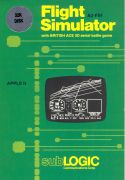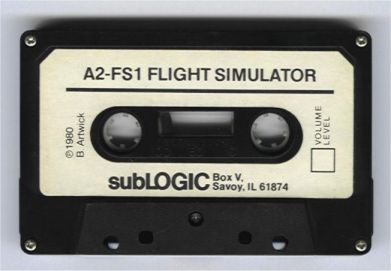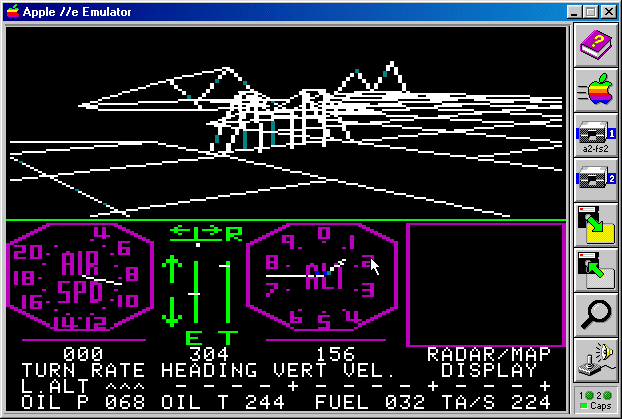 |
|
 |
|||||||||||||||||||||||||||||||
subLOGIC FS1 for the Apple II (1980)
ApplewinTo be able to run this program we need either a real Apple II or an emulator that runs on a current PC with a suitable disk-image of the original program. There are quite a few Apple II emulators around, but for our purpose I choose the Applewin emulator, version 1.8j, originally by Michael O'Brien and enhanced by Terry Hsu. As the name suggests it is a true Windows program. It also contains a good HELP file. Thanks to Matthew Wu for helping me with the emulator and associated FS-images. A different setup with a simple DOS Apple emulator can be found on Johan van Cranenburgh's website; see the links below.
Flight Simulator programThe FS1 program was originally released on cassette tape. Apparently there have been a few successive releases, each improving on the previous one. Mark Percival did a splendid job by collecting the different releases and putting them together in a file as disk-images, ready for an Apple emulator. He also added an nice introduction describing the differences and a flight manual with instructions on how to run the program. The download includes both the emulator with docs and the FS programs. Below you will also find a copy of the original control key reference card that was included in the 36 page manual. Note: the emulator download contains both FS1 and FS II for the Apple II. Instructions for starting up the emulatorFirst create a new
directory and unzip the contents of
the emulator file into this directory. Start up the emulator
by double clicking on the Applewin.exe program. If you think
of running it more often it might also be a good idea to
create a new (Applewin) shortcut on the desktop. Click on
the Help button (or press <F1>) to read the HELP
information. E.g. <F8> opens "system setup",
<F9> switches between window and full screen and
<F11> switches between colour and monochrome. Instructions to run the programA list of the control keys:
To get your plane airborne first throttle up a bit to taxi to the beginning of the runway. Use left and right rudder to steer. Then throttle up completely and at 60-80 knots give a bit elevator up. The aircraft can easily been flown from the keyboard; you don't really need a joystick. For further instructions read the docs and the reference card. Alternative solution: MESS 0.92 Since short we also have another, more universal solution, prepared by Josef Havlik. His new approach is based on using MESS (Multiple Emulator Super System). With MESS a still growing number of old processors can be emulated. The current download emulates 7 of the required platforms, including the Apple IIe, for both subLOGIC FS 1 and FS 2. For the downloads and instructions for this solution please go to our special MESS page. Other utilities like the control key reference card and other docs can be downloaded via the links above. There you can also find instructions about running FS 1. Further linksLatest revision: 11.03.2005 |
 |
||||||||||||||||||||||||||||||||
 |
|
 |



